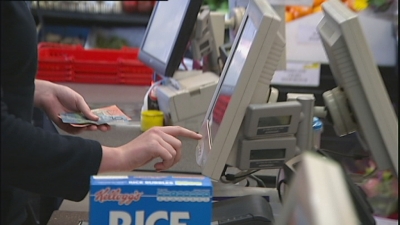
Cutting-edge mobile phone technology is set to revolutionise the way people shop, bringing a range of new and complex challenges for retailers, according to new research by Dr Emmeline Taylor, senior lecturer in criminology with the ANU College of Arts and Social Sciences.
Her research paper “Staying Ahead of The Game” was commissioned by Efficient Consumer Response Australasia, and looks at the benefits and risks of new mobile technology in retail, with a particular focus on how new technology will impact on shrinkage.
Shrinkage, which is the loss of stock due to shoplifting, employee theft, fraud and paperwork errors, costs the Australian retail industry over $2 billion a year.
“The introduction of any new technology, service or process will generate a range of risks, vulnerabilities, security issues and training needs,” Dr Taylor says.
“We saw this with the introduction of self-checkout in Australian retail, which redefined the retailer customer dynamic, but also increased the number of ways retailers suffer losses.
“We can expect similar hiccups with the introduction of new mobile scanning and mobile payment systems, as they create a new set of shrinkage problems.”
Dr Taylor said retailers could see fraudsters start to use mobile phone technology, because the security protocols were not as mature as e-commerce or in-store payment systems.
“Mobile payment processes must be safe and secure from the outset. Fraudulent activity, theft and security breaches not only impact the bottom line but can have devastating impacts on customer confidence,” she said.
“Retailers will need to ensure that any potential security risks are anticipated and safety measures are put in place.”
Some examples of new mobile technology we may see in Australian stores in the near future include:
Customers using an app to convert their smartphone into a scanner. When they’re finished shopping, the list of scanned items is downloaded at a paystation, and customers can then pay by cash, card, or by using their smartphone as a ‘mobile wallet’. Customers using in-store devices such as a tablet to browse and select items, and then make their payment. Customers use store-owned hardware such as a handheld scanner, or a touchscreen tablet fixed to a shopping trolley. When they have finished shopping and scanned all items, customers take the scanner and items to a kiosk or checkout station, where the purchase information is downloaded and payment is made.
“The traditional staffed checkout isn’t going to disappear, but there is a range of other point-of-sale methods that are becoming increasingly popular. The use of emerging technologies in retail is set to dramatically change the way we shop,” Dr Taylor said.
Members from the University of Technology Sydney’s ‘Designing Out Crime’ research centre and from the Australasian retail industry worked with Dr Taylor on the report.



